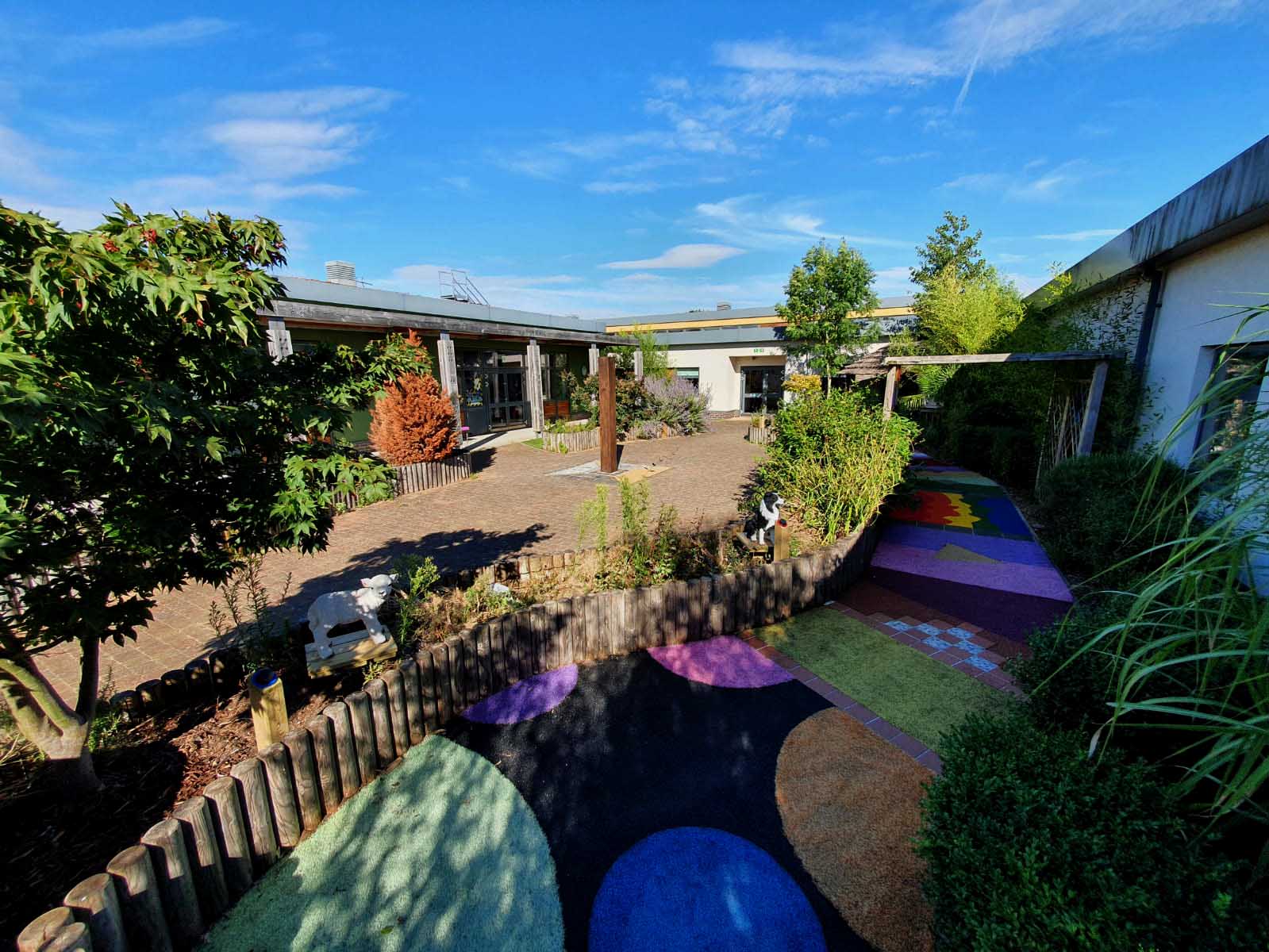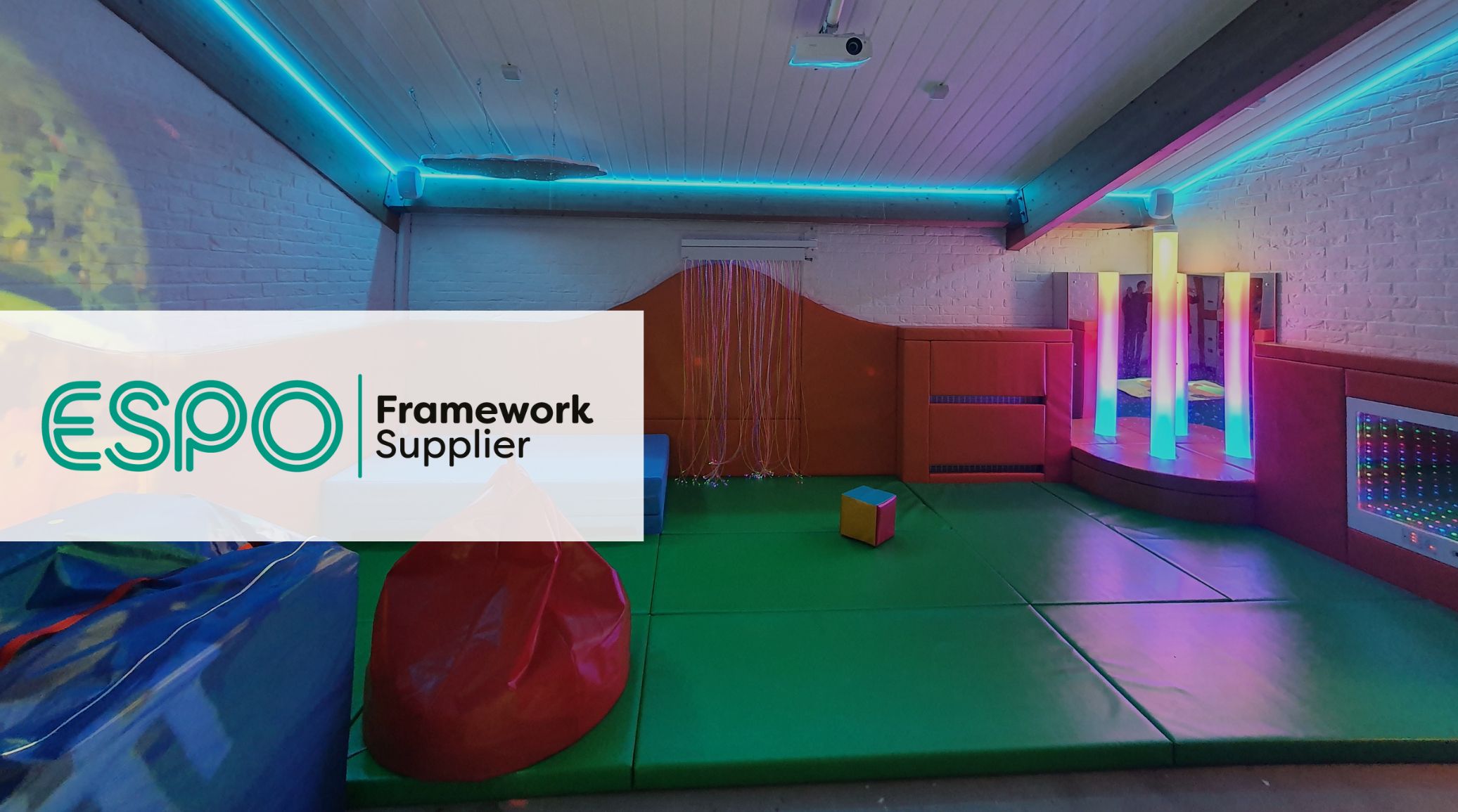As more schools look for fun and meaningful ways to take learning outside the classroom, sensory gardens in schools are becoming a popular resource. These creative, nature-filled spaces are designed to engage all the senses—helping children explore, learn, and relax within their learning environment.
Whether it’s through touch, smell, sound, or sight, sensory gardens offer something for everyone and are great for supporting different learning styles and needs. In this post, we’ll explore why sensory gardens in schools are such a great addition, what goes into designing one, and how they can create exciting learning opportunities for students.
What Is a Sensory Garden?
A sensory garden is a specially designed outdoor space that aims to engage, stimulate and regulate the senses through a range of interactive sensory equipment and features.
Typical features within a sensory garden can include scented plants, textured surfaces, water features, sound-making objects and interactive visual elements.
Check out our Benefits of Sensory Gardens blog to find out more.

Benefits of Sensory Gardens In Schools for Learning and Development
Sensory gardens aren’t just beautiful outdoor spaces—they’re powerful tools for supporting children’s learning and development in schools. These fun, interactive spaces allow students to connect with all their senses while offering a peaceful outdoor area to explore and unwind.
Research by Tutors International states that nature-based education is a vital part of well-rounded learning. Without it, students miss out on important cognitive, physical, and emotional development. Here’s a few key benefits that sensory gardens in schools can offer towards learning and development:
- Sensory Integration: By exploring and interacting with the sounds, sights, textures, and smells in the garden, students can develop their sensory processing skills and learn how to use them better in daily life.
- Emotional Regulation: Provides a calming outdoor environment to reduce anxiety and overstimulation outside of the regular classroom.
- Physical Development: Encourages movement, exploration, and motor skill development through various outdoor activities.
- Cognitive Growth: Sparks curiosity, problem-solving, and nature-based learning.
- Social Skills: Shared exploration throughout the sensory garden can facilitate and support communication, turn-taking, and teamwork.
Using Sensory Gardens in Outdoor Learning
Another key element of sensory gardens in schools are the rich and engaging lessons that teachers and educators can create within the outdoor classroom. Past research has shown that in comparison to indoor classrooms, higher engagement can be found from outdoor learning, improving focus and attention.
Sensory Gardens offer plenty of opportunities for nature-based learning, such as identifying plants, exploring life cycles, and observing weather changes. They also support a variety of subjects like:
Science – e.g. through the plants, wildlife and habitats.
Art – e.g. through exploring natural textures and colours
Maths – e.g. through counting elements or identifying shapes.
Incorporating Play into Your School Sensory Garden
Incorporating play into sensory garden design is a key part of supporting early childhood development. Free play and sensory play can aid young children learn, grow, and make sense of the world around them. At Sensory Technology, a huge benefit of our sensory gardens are the interactive, user-activated equipment featured throughout. Allowing users to have fun cause-and-effect learning, determining the outcome of their actions. Some of the interactive features in well-designed sensory garden can include:
Environmental and Visual Effects
Pictured: Bubble Machine and Jumping Jets
Sound Instruments & Animals
Pictured: Bubble Machine and Jumping Jets
Tactile Features & Activities
Pictured: Sensory Pathway & Minibeast Activity Panel
Planting & Aromas
Pictured: Sensory Plants/Herbs & Wheelchair Accessible Planter
Accessibility & Inclusion in Sensory Garden Design
Creating a sensory garden that’s accessible and inclusive ensures that every child, regardless of ability, can enjoy and benefit from the space. A thoughtful sensory garden design can make a big difference, especially for children with physical disabilities, special educational needs such as autism, or sensory processing challenges.
Features such as wide/smooth pathways, low-height equipment, and raised, wheelchair-friendly planting beds help make the garden usable for those with mobility limitations.
The types of users accessing the space can help guide the choice of equipment and features included in the school sensory garden. For example, children who are easily overstimulated may benefit from calming elements like soothing visuals and gentle scents to help them relax. Alternatively, those who need more sensory input may respond well to more complex, engaging activities that boost focus and support cognitive development.
With a bespoke sensory garden design, you can tailor your school sensory garden to cater to a specific need or goal, or create a flexible environment that can accommodate various types of users.
Are you reading to create an outdoor learning space in your school? Get in touch today to start planning your bespoke sensory garden.




